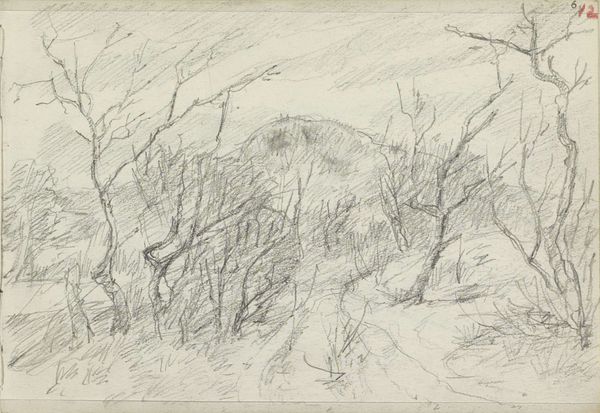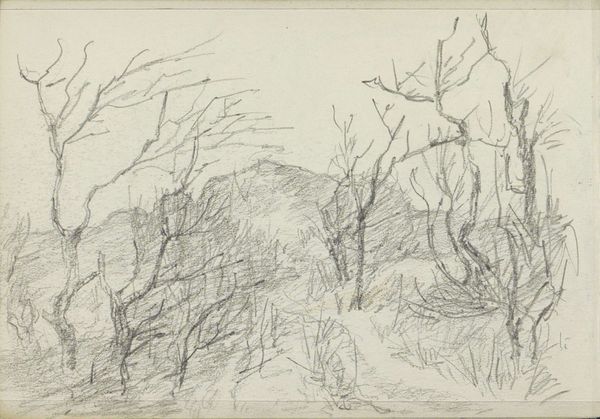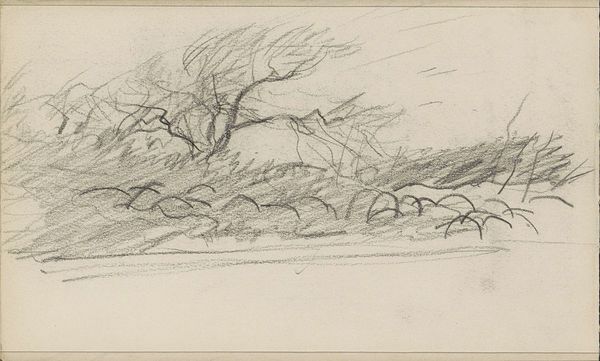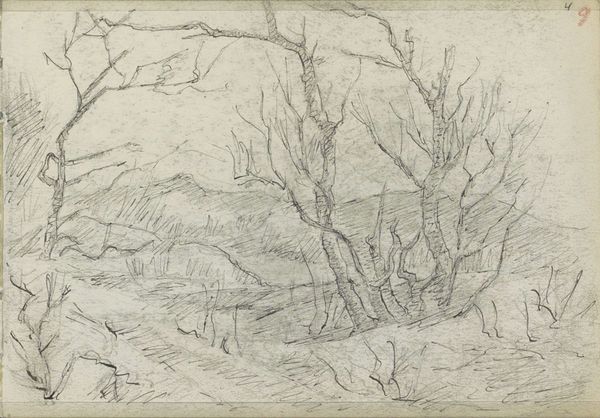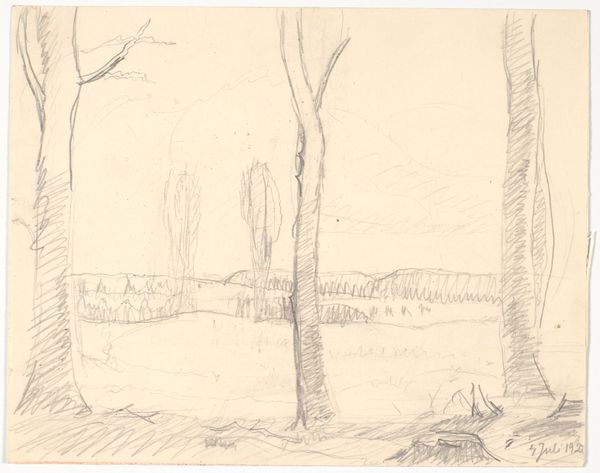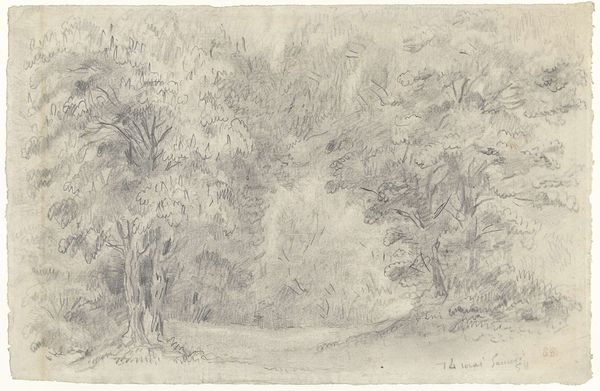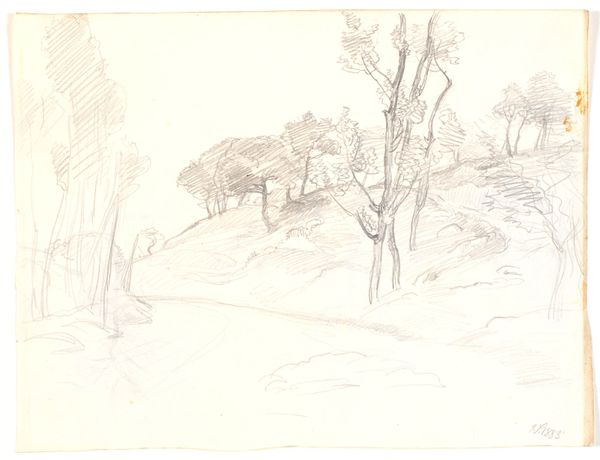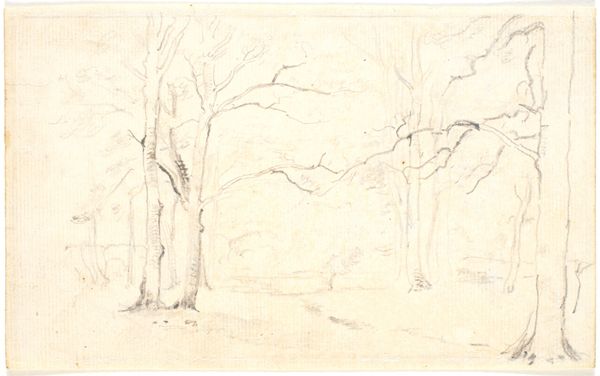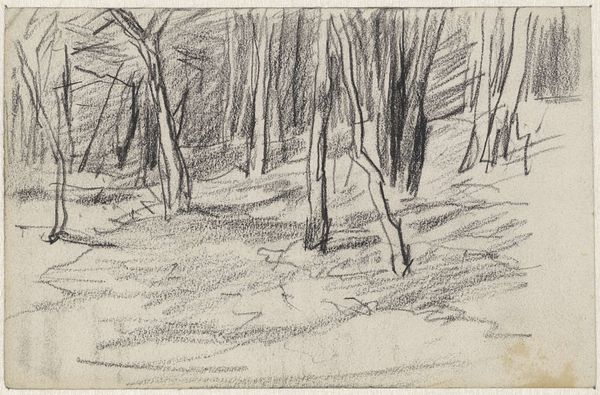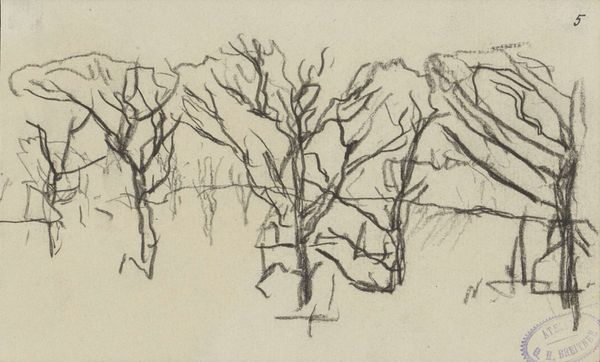
drawing, pencil
#
drawing
#
dutch-golden-age
#
pencil sketch
#
landscape
#
pencil
#
realism
Dimensions: height 180 mm, width 126 mm
Copyright: Rijks Museum: Open Domain
Jozef Israëls made this drawing, Duinlandschap, with graphite, and most likely in the Netherlands during the late 19th century. The image depicts a figure on a horse-drawn cart traversing a path through a windswept, rural landscape. Israëls belonged to the Hague School, a group of Dutch artists who reacted against the formality of academic art, choosing to portray the everyday lives of peasants and fishermen in a realistic manner. As such, the artist was influenced by the social realism of the French painter, Gustave Courbet, and the Barbizon School. The scene here is devoid of any romanticizing. The muted tones, the bare trees, and the lonely figure evoke a sense of the harshness of rural life, and perhaps the social isolation of the working class. To understand the social and institutional history of the art of this period, one must consider the rise of social realism as a reaction to the industrial revolution and the increasing gap between the rich and the poor. Scholarly articles and museum archives can provide additional information and context for this image.
Comments
No comments
Be the first to comment and join the conversation on the ultimate creative platform.
